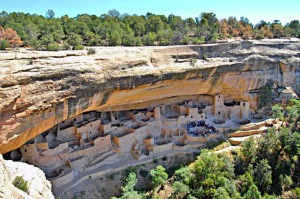 By: Anderson Lewis
By: Anderson LewisPeople often think of sustainable construction as if it was a new concept, when in reality it is the concept of wastefulness in construction that is novel. Throughout much of history people built their homes with environmentally benign materials that were locally sourced and readily available out of necessity. Over time, it was discovered that using certain designs, orientations, material choices, and construction methods could lead to homes that maximized comfort and functionality for residents.
For example, Ancient Syrians discovered that they could construct beehive shaped mud huts that would keep them cool in their hot, arid desert climate. The mud used to build these huts has a relatively high thermal mass so it is slow to absorb or release energy. Few or no windows prevent radiant heat gains in the huts. A small hole in the center of the elevated ceiling allows for hot air to rise and escape the structure. This leads to these structures staying cool during the day and somewhat warm at night.
Cliff dwellings constructed by the Pueblo Indians are another great example of using natural surroundings and passive design strategies to maximize comfort. Entire villages constructed out of stone have been discovered built into southern facing cliffs and nestled underneath natural rock overhangs. These overhangs effectively minimize unwanted direct solar heat gain during the summer months while allowing for much needed heat gains the winter months. The rock overhang also provides residents with protection from rain and snow.
While it is not practical for everyone to have a stone house built into the side of a cliff, nor do most westerners want to live in a mud hut, it is possible to use a higher percentage of locally sourced materials and take advantage of passive design strategies to optimize the performance of your building.
As written by the ancient Greek philosopher Aeschylus, “Only primitives & barbarians lack knowledge of houses turned to face the winter sun.”
But as I walk through my neighborhood it seems as though houses were dropped on their site with no consideration of the buildings orientation.
So has the technological “advancement” of the human race somehow caused us to revert primitives and barbarians without enough sense to even attempt to take advantage of the free energy from the sun? Are we content relying on the brute strength of our HVAC systems to regulate our comfort instead of taking advantage of the synergistic opportunities of good design and construction.
 Sure, technology certainly has the potential to enhance the comfort and functionality of homes but it often comes with negative impacts on the environment and consequently, our health.
Sure, technology certainly has the potential to enhance the comfort and functionality of homes but it often comes with negative impacts on the environment and consequently, our health.I assert that technology must not take place of previously developed designs & construction methods that we now refer to as “sustainable,” rather it should be used to optimize and build upon these previously established construction principles.
In the past, building designs were refined and optimized from the process of trial and error over many years. Now software exits capable of running building performance simulations to give us a better idea of they will perform before we construct them. These simulations allow us to better understand how a variety of factors such as climate, building orientation and design, material selection and construction methods impact a building’s ultimate performance.
In addition, advancements in windows, air sealing techniques, and insulation have made building more efficient houses even easier than ever before.
Even something as simple as landscape considerations can positively impact the performance of your building.
Passive design, when done properly, can reduce the need for mechanical heating and cooling and allow for HVAC systems to be scaled down.
In conclusion, there is no denying that technology is here to stay; however, we should not solely rely on technology for our comfort. Past cultures have proven that thoughtful design can produce structures that make the best out of natural surroundings. Technology should build upon passive design strategies instead of being use in lieu of passive strategies. Thoughtfully designed and constructed houses do not have to cost more than an average house and will use considerably less energy. To me, this is an obvious choice.

